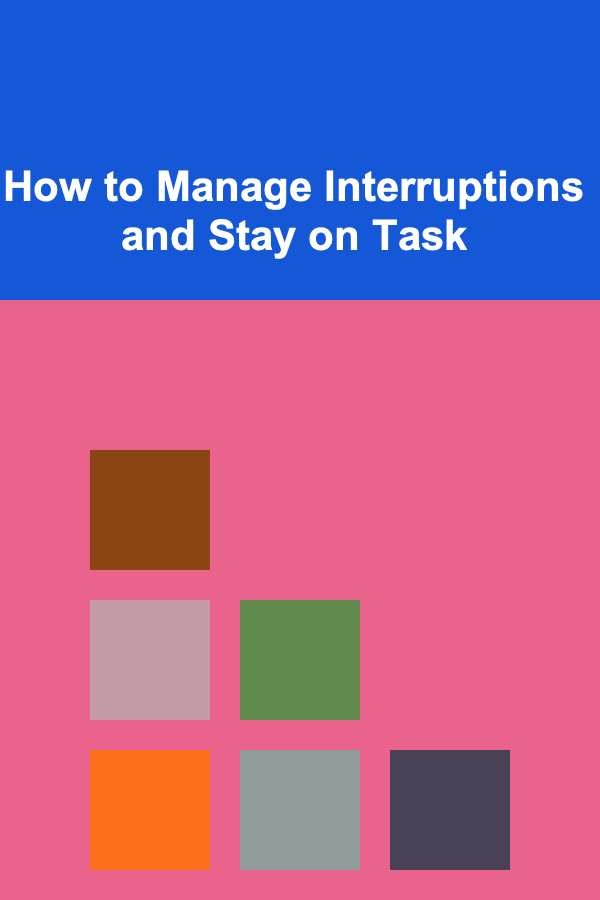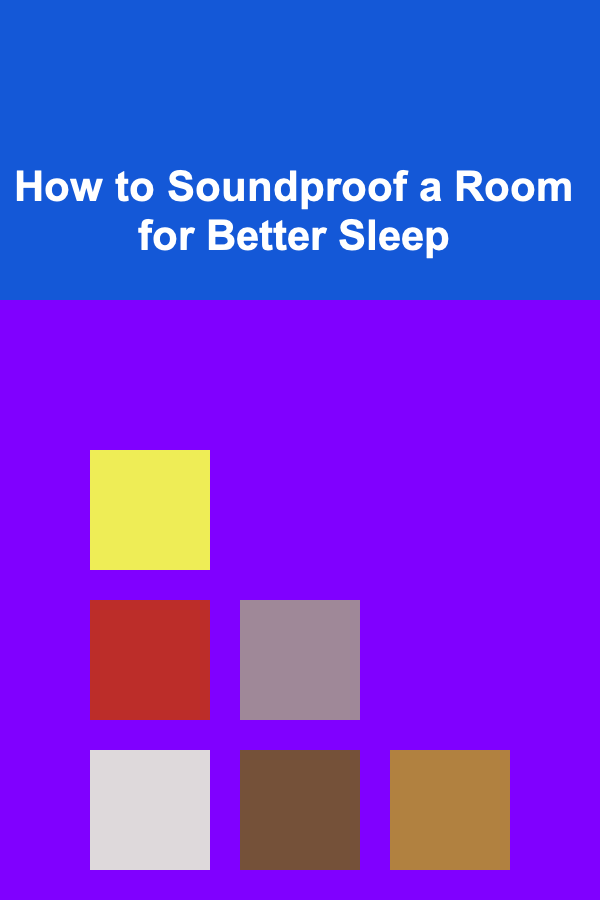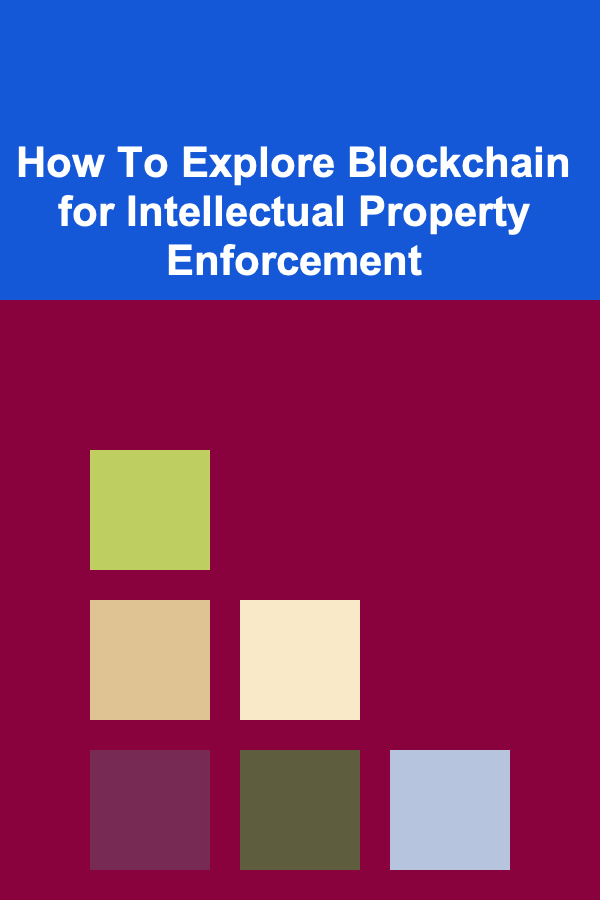
How to Manage Interruptions and Stay on Task
ebook include PDF & Audio bundle (Micro Guide)
$12.99$11.99
Limited Time Offer! Order within the next:

In today's fast-paced, interconnected world, interruptions are inevitable. From social media notifications to workplace distractions, it seems that we are constantly being pulled away from the tasks at hand. This can lead to a loss of focus, reduced productivity, and an overall feeling of being overwhelmed. However, managing interruptions and staying on task is a skill that can be learned and refined with practice.
In this article, we'll explore strategies to manage interruptions effectively, enhance focus, and stay on task, regardless of the distractions that might arise. We will break down the science behind distractions, offer practical advice, and discuss the benefits of maintaining sustained attention in your personal and professional life.
Understanding the Nature of Interruptions
Interruptions can be classified into two main types: external and internal. External interruptions come from external sources, such as coworkers, family members, phone calls, and social media alerts. Internal interruptions, on the other hand, originate from within---these are mental distractions like wandering thoughts, worries, or daydreams.
External Interruptions
External interruptions are one of the most common and challenging barriers to productivity. They can be immediate and uncontrollable, often coming from people or devices that demand attention. In a workplace setting, this might look like colleagues dropping by your desk for a chat or emails requiring your prompt response.
Internal Interruptions
While external distractions can be addressed through environmental control, internal interruptions are a bit more challenging. Internal distractions can arise from stress, a sense of inadequacy, boredom, or an overactive mind. These distractions pull your attention away from your work and can lead to procrastination.
Both types of interruptions disrupt our ability to maintain deep focus, which is critical for high-quality work and creativity. Understanding how interruptions occur is the first step toward managing them effectively.
The Science of Distraction
The human brain is wired to pay attention to stimuli, but it is not always able to prioritize what is important. Studies in neuroscience have shown that when we are distracted, our brain activity shifts to areas that are not related to the task at hand, which reduces efficiency and can cause us to take longer to complete a task.
In fact, research from the University of California Irvine found that it takes an average of 23 minutes to refocus on a task after an interruption. This time cost adds up quickly, especially in high-pressure environments where every minute counts. Even when an interruption seems small, the time and mental energy needed to re-engage with the task can be substantial.
Additionally, the more frequently we experience interruptions, the harder it becomes to focus. The brain starts to form patterns around the distractions, and it begins to expect that it will be pulled away from the task. This can create a cycle of fragmented work and diminished attention span.
How to Minimize External Interruptions
External interruptions are often within our control, and taking steps to minimize them can significantly improve our ability to stay on task. Here are some strategies for reducing external distractions:
1. Create a Distraction-Free Workspace
One of the most effective ways to minimize external interruptions is to create a work environment that supports focus. This could mean setting up a dedicated office space, using noise-canceling headphones, or choosing a quiet time of day to do your most important tasks. If you work in an open office, consider using cubicles or partitioning your workspace to create physical boundaries.
2. Set Boundaries with Colleagues or Family Members
If you're working from home or in a shared office, setting clear boundaries with the people around you can be incredibly helpful. Let your family members or coworkers know when you need focused time, and establish specific hours during which you are unavailable for social interaction. The use of a "do not disturb" sign or status indicator on communication platforms can also reinforce these boundaries.
3. Turn Off Notifications
In today's digital age, notifications from email, text messages, and social media apps are constant sources of distraction. The temptation to check your phone can be overwhelming. To reduce this, turn off non-essential notifications and set specific times throughout the day to check your messages. For tasks that require deep concentration, consider using apps that block distracting websites or limit your time on social media.
4. Use the "Two-Minute Rule"
If an interruption is quick and easy to resolve (like answering a simple question from a colleague), consider implementing the "two-minute rule." If the task can be completed in two minutes or less, take care of it immediately and return to your main task. However, if the interruption requires more time, schedule it for later so that it doesn't derail your current focus.
5. Scheduled Breaks
Scheduled breaks are essential for productivity, as they allow you to recharge and prevent burnout. However, these breaks should be planned in advance so that they don't disrupt your workflow. Techniques like the Pomodoro Technique, which suggests working in 25-minute increments followed by a short break, can help maintain balance and keep you on track.
How to Manage Internal Interruptions
Managing internal distractions is often more difficult because they originate from our own minds. These can include thoughts about personal issues, worries about the future, or feelings of boredom. However, these distractions can be managed with certain strategies:
1. Practice Mindfulness and Meditation
Mindfulness and meditation are powerful tools for reducing internal distractions. By practicing mindfulness, you train your brain to focus on the present moment, helping you become more aware of your thoughts and redirect them when they stray. Daily meditation can also enhance your ability to manage stress and quiet your mind, making it easier to stay focused on tasks.
2. Prioritize Tasks with the Eisenhower Matrix
Sometimes, internal distractions arise from a lack of clarity about what needs to be done. To combat this, use a task management tool like the Eisenhower Matrix. This technique helps you prioritize tasks by categorizing them into four quadrants: urgent and important, important but not urgent, urgent but not important, and neither urgent nor important. By knowing exactly what needs to be done, you can stay focused on your most important tasks and avoid getting bogged down by less critical distractions.
3. Use Visualization Techniques
Visualization is a powerful mental strategy that can help you stay focused on your goals. Spend a few moments visualizing your task in vivid detail---this can help ground you in the present and reduce feelings of anxiety or distraction. Visualizing the completion of the task and the benefits it will bring can provide motivation and clarity.
4. Break Tasks into Smaller Steps
If a task feels overwhelming, internal distractions can arise from a sense of dread or anxiety. Breaking large tasks into smaller, more manageable chunks can help alleviate this feeling. Instead of thinking about the entire project, focus on completing one small step at a time. This approach makes the task feel less daunting and helps keep your attention on the immediate next action.
5. Deal with Negative Thoughts
Internal distractions are often fueled by negative thoughts or self-doubt. If you find that you're struggling with a particular task, try to address these negative thoughts by practicing self-compassion. Remind yourself that it's normal to face challenges and that you can take breaks or ask for help if needed. Sometimes, simply acknowledging your thoughts and emotions can help you let go of them and regain focus.
The Role of Technology in Managing Interruptions
Technology can be both a source of distraction and a tool for managing interruptions. While it's easy to get pulled into endless scrolling or checking emails, there are also many apps and tools designed to help you stay focused.
1. Use Focused Work Apps
There are a variety of apps designed specifically to help individuals stay focused. Applications like Forest , Focus@Will , and Cold Turkey help limit distractions by blocking websites, tracking your time, and setting work and break intervals. These tools can be incredibly helpful for reducing the temptation to switch between tasks.
2. Time Tracking Apps
Time tracking apps like Toggl or RescueTime help you monitor how much time you're spending on various tasks. This information can provide insights into how often you are interrupted and where your time is going. By tracking your time, you can identify patterns and make adjustments to stay on task.
3. Task Management Tools
Effective task management tools such as Trello , Asana , or Notion allow you to organize tasks, set deadlines, and track progress. These tools help you stay on top of your workload, reducing the likelihood of getting sidetracked by less important tasks. By breaking down tasks and setting specific goals, you can maintain focus and productivity.
Cultivating a Productive Routine
The foundation of staying on task is cultivating a productive routine. Successful people often have routines that support their goals and minimize the potential for distractions. Here are some tips for building a routine that promotes focus:
1. Start the Day with Clear Intentions
Each day should begin with a clear set of intentions. Take a few moments to plan what you want to achieve and prioritize your tasks. This can help you mentally prepare for the day and give you a sense of direction.
2. Establish Consistent Work Hours
Having consistent work hours helps signal to your brain when it's time to focus. Whether you work from home or in an office, establishing a routine helps reduce the likelihood of procrastination. Try to keep your start and end times consistent and respect the boundaries you've set for yourself.
3. Set Specific, Achievable Goals
When you set specific and achievable goals, you create a roadmap for your work. This eliminates ambiguity and gives you clear targets to hit, which can help keep distractions at bay.
Conclusion
Managing interruptions and staying on task is an ongoing challenge that requires a combination of strategies, mindset, and tools. By recognizing the nature of distractions---both external and internal---and implementing methods to manage them, you can create an environment that promotes deep focus and productivity. Remember, focus is a skill that improves with practice. By committing to reducing distractions and creating systems that support sustained attention, you will find yourself achieving more and feeling less overwhelmed by interruptions.

How to Make Use of Overhead Storage in Garages
Read More
How to Plan for Investment Growth During Market Volatility
Read More
How to Soundproof a Room for Better Sleep
Read More
How to Take High-Quality Photos of Products for Online Selling
Read More
How To Explore Blockchain for Intellectual Property Enforcement
Read More
10 Tips for Communicating Security Risks to Non-Technical Stakeholders
Read MoreOther Products

How to Make Use of Overhead Storage in Garages
Read More
How to Plan for Investment Growth During Market Volatility
Read More
How to Soundproof a Room for Better Sleep
Read More
How to Take High-Quality Photos of Products for Online Selling
Read More
How To Explore Blockchain for Intellectual Property Enforcement
Read More